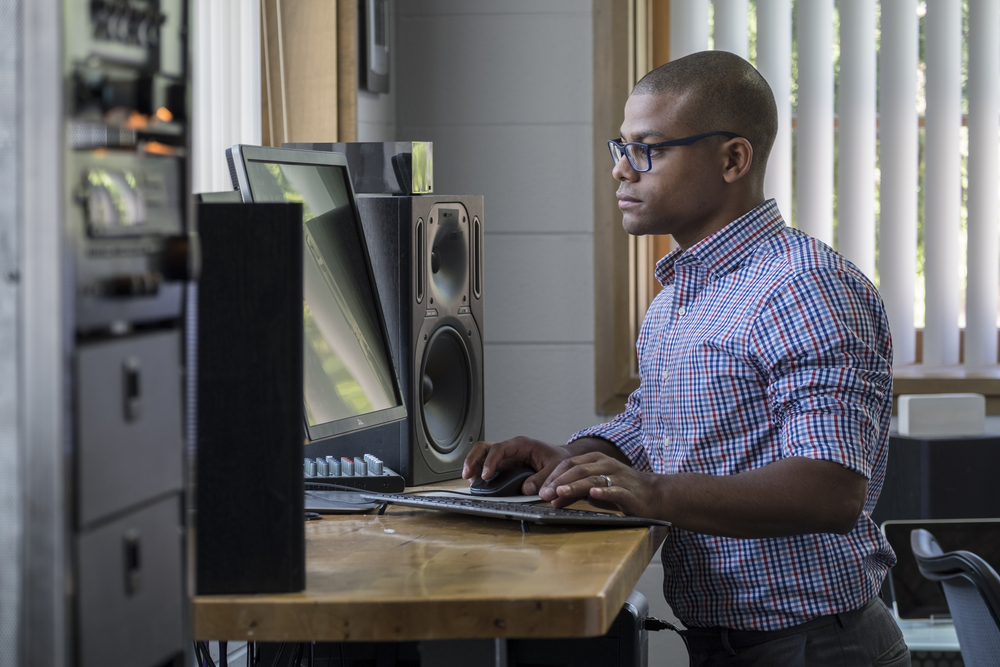Three Ways To Move More While Working From Home

Though people with office jobs often sit for up to 80% of the working day, many still manage to get an average of 3,616 steps daily, largely thanks to many small opportunities for activity throughout the day. But with many of us now working from home during the pandemic, this means that any exercise we might have had during our day – whether cycling to work, or walking to get lunch – may no longer exist. While the way we work has changed, that doesn’t mean we can’t easily find ways to be more active during our work day if we look at how we managed to get active while working in an office.
Here are a few things you can try to get you to move more while working from home:
1. Stand up and move while working
And while there is an abundance of reasons to move that have nothing to do with calories and weightloss, this is important consideration to many and a common question of those working from home. Prolonged standing burns more calories than sitting. While this won’t be enough to tackle weight loss, replacing two hours sitting each day with standing can burn up to 130 calories a week, and may improve concentration. Standing more oftenduring your day may also improve glucose, insulin levels, and blood pressure in the long term.
You may be surprised to hear that [fidgeting is also good]. These small, regular movements (such as tapping your foot or shifting position) while sitting also burn more calories by increasing energy expenditure by 5–10% above resting values.
Experts recommend office workers try to get at least two hours a day standing or moving around during work hours – and should build up to four hours, if possible. To start out, try adding at least 30 to 60 minutes of standing into your workday, perhaps by alternating between fifteen minutes standing followed by fifteen minutes sitting. Or perhaps try taking all your calls or meetings while standing.
2. Take “exercise snacks”
Short bursts of exercise – or “exercise snacks” – are beneficial for your health. Previously, it was thought bouts of exercise needed to last longer than ten minutes to be beneficial to our health – but recent research indicates activity of any duration is good for health. Regular exercise also improves memory and even has brain-enhancing effects by improving memory and reducing inflammation in the brain (which can lead to conditions such as Alzheimer’s). Climbing the stairs is a great way to get moving.
Try to take regular active movement breaks or exercise snacks during your day. For example, climbing the stairs can be a useful exercise, with research showing ten minutes of stair climbing can have a similar effect on energy levels as a cup of coffee does in sleep-deprived people. Vigorously climbing three flights of stairs (60 steps) at least three times a day – separated by one to four hours of rest – may improve your fitness.
A lower impact option would be to walk a few laps around your house. Even something as simple as moving rooms to refill your water glass or tea cup can help you get a bit of extra movement in.
3. Exercise at lunchtime (outdoors if possible)
Emerging evidence shows that going outside to exercise during the day in natural settings (such as parks, fields, or near rivers or coastlines) can be beneficial to our mental health and cognitive ability.
But many people aren’t lucky enough to live near easily accessible natural environments. Fortunately, research shows that even getting out in the fresh air for a short walk or run is health enhancing. If you can’t get outside during lunch, exercising indoors can still be beneficial to your health.
Remember, any movement is better than none – and the more the better. While you are working from home, make a special effort to build activity back into your day for both your mental and physical health.
Sources:
Author:

Dr. Julie Broderick
Dr. Julie Broderick is an Assistant Professor in the Department of Physiotherapty. She was awarded a Health Research Board (HRB) Clinical Fellowship in 2008 and her doctoral work was entitled ‘Physical Activity through the Cancer Trajectory’and a HRB Cochrane Fellowship in 2015. She also holds an honours degree (BSc.) in Physiotherapy, a Masters in Exercise Physiology (MSc.) and a Post-graduate Diploma in Statistics (H. Dip.) from Trinity College Dublin.

